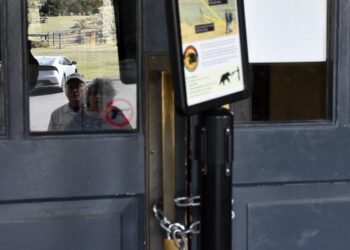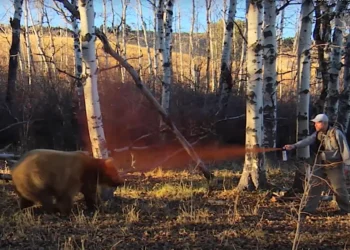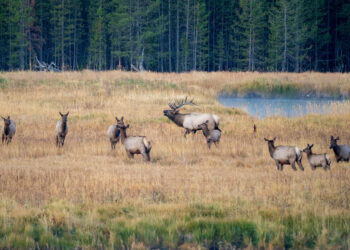By Diane Tipton, Montana FWP Statewide Information Officer
Living close to the earth and low on the food chain seems to be working for the red fox in the West.
Montana’s fox population is thriving, according to Montana, Fish, Wildlife and Park’s furbearer coordinator Brian Giddings.
The red fox has a long history of association with humans, as do Montana’s other canine species the swift fox, coyote and wolf. The red fox has been viewed in a variety of ways—as a favorite of wildlife viewers, a pest to ranchers and farmers, and a highly appreciated furbearer. The fox has also been a prominent image in folklore and mythology.
Some researchers also believe there may be mountain dwelling red fox populations in Montana. These foxes keep to the subalpine parklands and alpine meadows of the Rocky Mountains, particularly in the Yellowstone area and Beartooth Plateau. Research is underway to learn more about red fox mountain populations.
The red fox that Montanans commonly see in agricultural and lowland areas is a lightweight canid, about 10-15 pounds, and about 39-43 inches in total length, according to the Montana Field Guide. A red fox looks larger than it is due to its thick fur and extra-long, full tail. These animals have elongated bodies, with narrow, fine-boned heads, long, slender canine teeth, and relatively short legs. Their distinctively shaped muzzle is notably narrower than the average dog’s. The tail of the red fox is nearly 70 percent as long as its body length some sources say.
The red fox has an annual spring litter of kits. After a gestation of about two months, usually four to six kits with soft, dark brown fur are born blind, deaf and toothless. Their eyes open after about two weeks. Kits begin to leave their dens and experiment with solid food at about a month of age, though they continue to nurse for nearly two months.
Fox can survive in a wide range of habitats, though they are often seen in agricultural areas. They prefer a mix of forest and open country near water. For protection and cover they will use burrows on well-drained sites such as hillsides, mountain slopes, or ravines. Foxes will also use the abandoned burrows of other burrowing wildlife.
Red fox are reported to dig out excess soil from a burrow with their forepaws while also kicking away soil with their hind legs. The result is a trampled area of fresh soil where new born kits eat and play.
The omnivorous red fox feeds on voles, mice, woodchucks, deer mice and the like. The old fox in the hen house story speaks to their appetite for eggs, chickens, domestic rabbits and song birds.
Globally there are more than 40 fox species. Fossils suggest that the red fox initially colonized North America from Eurasia across the Bering land bridge about 300,000 to 130,000 years before today, later expanding southward into the USA 130,000 to 100,000 years ago.
There are a lot of questions about the fox as a species, its origins, and genetic makeup. Research is underway to learn more. In the western U.S., researchers are beginning to study the evolutionary history of the red fox through the use of genetic analysis.
For more on the red fox, see the Montana Animal Field Guide on the FWP website at fwp.mt.gov on the Fish & Wildlife page.













